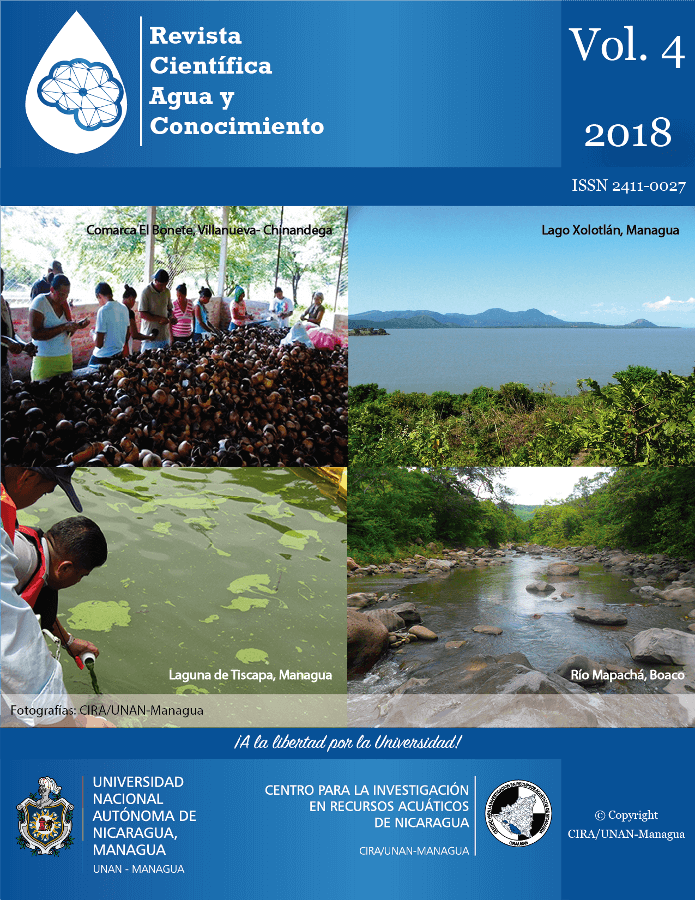Estimación de la disponibilidad hídrica superficial en la microcuenca del río Mapachá, San Lorenzo, Boaco
Abstract
Water availability in the Nicaraguan basins is influenced by geological characteristics, land use and anthropogenic activities such as agriculture and livestock. In the present study there was an estimated water availability in the microbasin of the Mapachá River, San Lorenzo-Boaco, Nicaragua. Hydrological and geological survey of the microbasin was carried out. The river flow was measured at seven points in the main tributaries. Additionally, ten infiltration tests were performed by the double ring method to determine the infiltration capacity of the different soil types. The Soil Water Balance (SWB) was calculated by the Schosinsky method (2006), based on the results of the infiltration (I), precipitation (P) and temperature (T) tests for the period 1995-2011. The results showed that the highest water losses are due to real evapotranspiration (ETR), surface runoff (ESC) and potential recharge (Rp) corresponding to 75%, 17% and 7% of the total precipitation, respectively; resulting in an availability of 0.30 million cubic meters per year (MMCA); what is reflected in the lack of base flow in the main tributaries. Concluding that, the potential recharge of the aquifer and the base flow in the rivers are influenced by the natural conditions of the microbasin.


